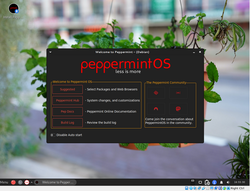Review: Peppermint OS 2023-07-01
Peppermint OS has a long and storied history; it was one of the first low-resource distros that was innovative, looked good, and just worked, and many of us who prefer that style have fond memories of seeing its peppermint candy logo pop up on the screen.
But, as so often happens with small distros, something derailed the project. In this case, Peppermint leader Mark Greaves died, and the distro went nearly three years between releases.
It returned in 2022, with a couple of significant changes - based on Debian and not the Ubuntu family it used before; the Calamares installer; and an Xfce desktop instead of the previous Xfce-LXDE hybrid. The current release, Peppermint OS 2023-07-01, is the second under the new regime.
As such, it wants to continue Greaves' minimalist approach: "Everything you need and nothing you don't." Unfortunately, though the new release tries to do just that, it still has a long way to go after a week or so of testing. This is a buggy, flawed effort, good intentions notwithstanding. Yes, it's still focused on low-resource systems, but it's more like an advanced proof of concept for the new approach than something to use as a daily driver. For instance, why highlight the Snap store if snapd isn't installed by default?
This is not a criticism of the approach. I much prefer minimalist distros; I don't even like using Qt-based music players. But low-resource isn't an excuse for bad execution, and that's the case here. It offers a variety of features that I'd love to see other distros adopt. But if the features are flawed, what's the point?

